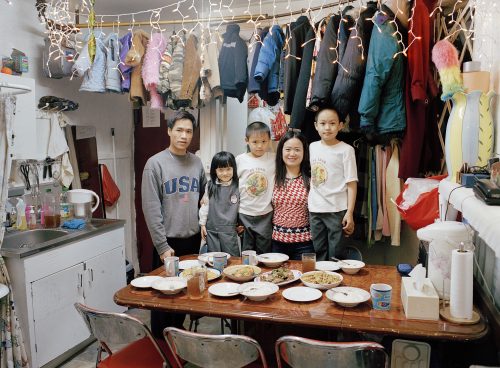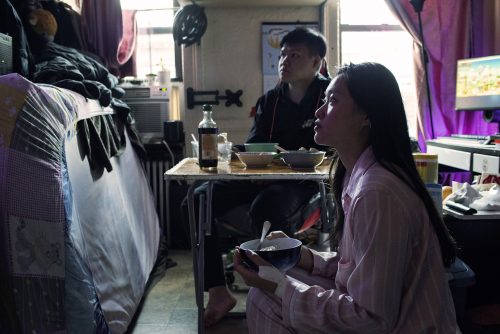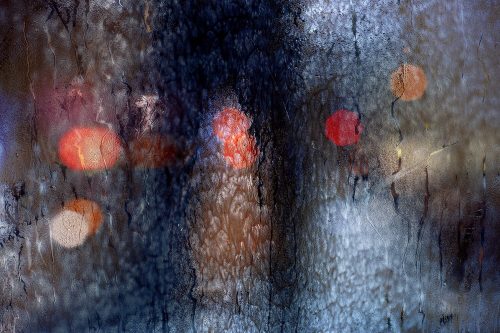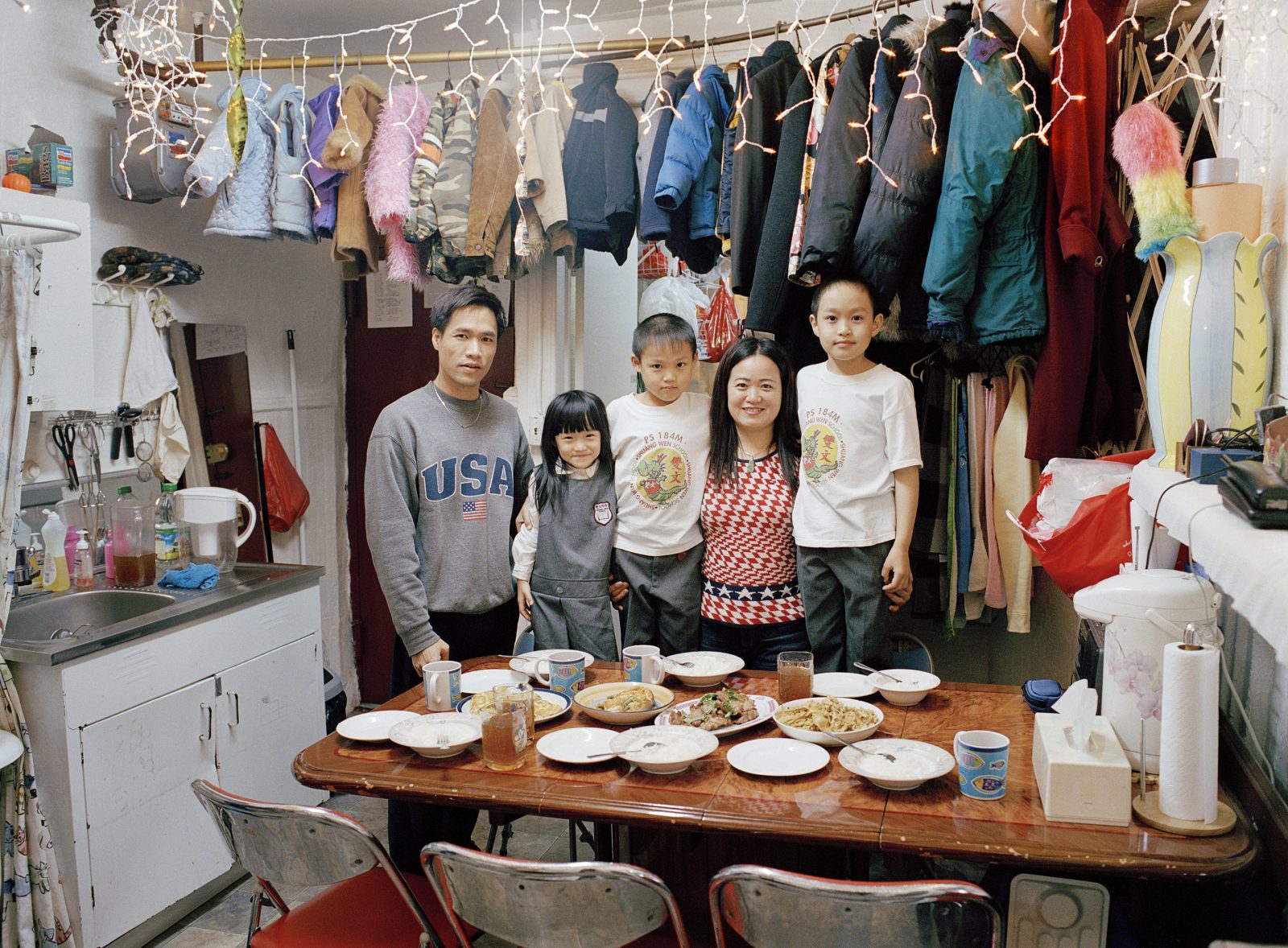Thomas Holton is a New York-based photographer who is most renown for “The Lams of Ludlow Street,” a series documenting the life of a Chinese family in NYC for the past 18 years. A moving story about family, culture, and change, the narrative offers an intimate look inside their Chinatown apartment, following the challenges and unscripted reality the family has endured.
Holton has received global accolades for this project, exhibiting at venues including The Museum of the City of New York, The New York Public Library, The China-Lishui International Photography Festival, Sasha Wolf Gallery, and most recently, the Home Gallery. A pioneer of Asian American representation in the arts, Holton has been featured three times in The New York Times (2008, 2012, and 2016) in the past two decades, as well as a variety of other publications, including National Geographic and Buzzfeed. In 2016, Holton published his first book, The Lams of Ludlow Street. He also works as a teacher at Trinity School NYC, where he teaches both film and digital photography.
It was an incredible honor to interview Mr. Holton, who taught me photography in high school and greatly influences my work to this day. I am especially excited to share more about the inspiration behind his moving series, which remains all the more relevant amidst the recent rise in anti-AAPI hate. As the need for empathy toward and space for Asian American stories is more crucial than ever, “The Lams of Ludlow Street” succeeds in deconstructing racial stereotypes and complicates the question of what it means to be Chinese. Though there is no singular Asian American experience, “The Lams of Ludlow Street” depicts one family’s story with unbridled authenticity, vulnerability, and sophistication.

Holton, Thomas. “Family Portrait.” The Lams of Ludlow Street I.
When was the first time you used a camera? When did you realize you wanted to be a photographer?
My father was a photographer, so I grew up surrounded by his images. After he died, I began to play with his cameras at around 16 years old. I started taking it a bit more seriously in college and signed up for classes during summer breaks. After college, I knew I wanted to pursue photography, so I assisted local NYC photographers for about 10 years before enrolling in graduate school at SVA (The School of Visual Arts) and earning my MFA in 2005.
Who are your primary sources of inspiration as a photographer?
I absolutely fell in love with Cartier-Bresson’s work when I first started to truly study photo history (like many aspiring photographers do). When I began to focus on the Lams and photographing their life, I then devoured the work of Sally Mann, Larry Sultan, and the FSA work of Walker Evans.
How has your interest in your Chinese culture shaped your perspective as a photographer?

Holton, Thomas. “Bath Time.” The Lams of Ludlow Street I.
Even though I am half-Chinese and had relatives living in NYC’s Chinatown neighborhood, I never felt like I belonged and was always regarded as a visitor. So a major reason that I began photographing around Chinatown was to address this disconnect in my own identity and to try to understand what life was like in this neighborhood. I studied the Chinatown work of Corky Lee and Chien-Chi Chang to better understand how they approached photographing the area. The humanity of their work made me move beyond the surface of my early Chinatown images and pushed me as a photographer to better understand the lives behind closed doors. It’s made me really value the emotional content of photography.
When and how did you begin working on “The Lams of Ludlow Street?”
I first met the Lams in 2003 when I was accompanying a local housing advocate from The University Settlement, who took me along on her weekly visits to her clients to check in on them. I met maybe around 10 families through her and one luckily was the Lams.

Holton, Thomas. “Quarantine Lunch.” The Lams of Ludlow Street IV.
How has the series evolved over the course of the past two decades?
The earlier work was really focused on their small space and the constant activity of their home. As I got to know them better, the work shifted to trying to capture the emotional tone of the moment. I evolved as a photographer as our relationship grew over time.
What is the biggest lesson you’ve learned from the project, and why?
I am a big believer in the long form narrative. None of our lives are easily scripted, so I have to believe that whenever I visit the Lams, there is a photograph to be made reflecting the present moment. This does not always translate into a new image that I love, but that does not stop me from visiting them or trying to make new work. Because of this, I do not think this project has a definitive end, and as long as they open the door for me, I will continue to visit since we’re basically family now.
What is your favorite photo you’ve taken, and why?

Holton, Thomas. “Supergirl.” The Lams of Ludlow Street III.
I adore the image “Supergirl” because Cindy had a challenging adolescence and was constantly living between a few apartments in the neighborhood, as her mom switched jobs and the parents divorced. So this image of her with a “Supergirl” shirt just seems very appropriate because she was able to overcome some unusual circumstances and is now a thriving college student.
What’s been the best and worst part of your journey as a photographer?
The best part has been by far the experiences I have had because I choose to explore a new place with my camera. If I was never curious about my Chinese half, I never would’ve wandered the streets of Chinatown and felt the need to meet people behind all those windows. The worst part is the fear of never making a new photograph that works while pushing myself creatively…I don’t want to constantly repeat myself over and over.
What is your next biggest project?

Holton, Thomas. “Chinatown Surface #5.”
Right now, I am mostly working on seeing the Lams as much as I can until I find some new ideas to explore. I will always photograph the Lams, but I do feel the need to cleanse the palette every once in a while. So I have been making abstractions in Chinatown during the winters as a way to use my eyes in a new way and practice different ways of seeing.
How has your work as a photography teacher impacted your experience as a photographer?

Thomas Holton in front of “The Fence” (2018), which displayed photos from The Lams of Ludlow Street II.
I would have to say watching students fall in love with image making helps remind me why I began photographing years and years ago. The sheer joy a student experiences when they make a photograph they absolutely adore is at the core of what we do as artists. For me, photography is an emotional act and a way to capture and memorialize the shared experience between me and the present moment. I love it when a student discovers that photography is more than iPhone images for Instagram and immediate satisfaction.
What is the one biggest piece of advice you would give to a young photographer?
I would advise to make your work as personal as possible and to foster an emotional connection to your “subject matter” because if you do not care about what you are photographing, your work will reflect this. The emotional need to make work is what will drive you to continue, even when your work isn’t strong or fully developed yet because you know “something” is there and you need to figure it out.
How do you think our culture can work to preserve the art of photography when social media and iPhones make the taking and sharing of photos so easy and pervasive?
Wow…major question. Photography is as easy as it has ever been because of phones and automatic cameras, but I think the work that will last 5 days, 5 weeks and 5 years from now are the projects that come from an honest, personal, and authentic place. Images with heartfelt intent will always outlast selfies and glamorous vacation photos on Instagram.

Holton, Thomas. “Mother’s Lap.” The Lams of Ludlow Street II.
How has the pandemic influenced your practice and what it means to be a photographer?
As for teaching, the photo lab was entirely shut down, but so much of the class is about being in the dark room, using the machines, and seeing what other students are making. The good thing that came out of it is that I found new ways to teach —looking at more books, blogs, and Ted talks, constantly finding photographers I’d never looked at before.
The pandemic taught us to cherish our loved ones and that the time we have, ultimately, can be pretty short. The need to memorialize experiences with loved ones became more important to me than ever. Life is a series of experiences, and photography translates them into art. As a teacher and a photographer, I tried to emphasize the importance of making meaningful work that will resonate 5 or 10 years from now. If you find a photo you took 10 years ago, a rush of emotion will come back, and that’s the point of photography — it’s a memorial, a way to relive an experience.
Read more lifestyle articles at Clichemag.com
Photo credits: Thomas Holton Photography, Thomas Holton Photography Instagram




